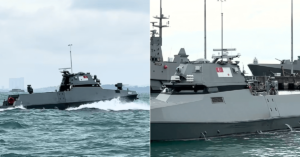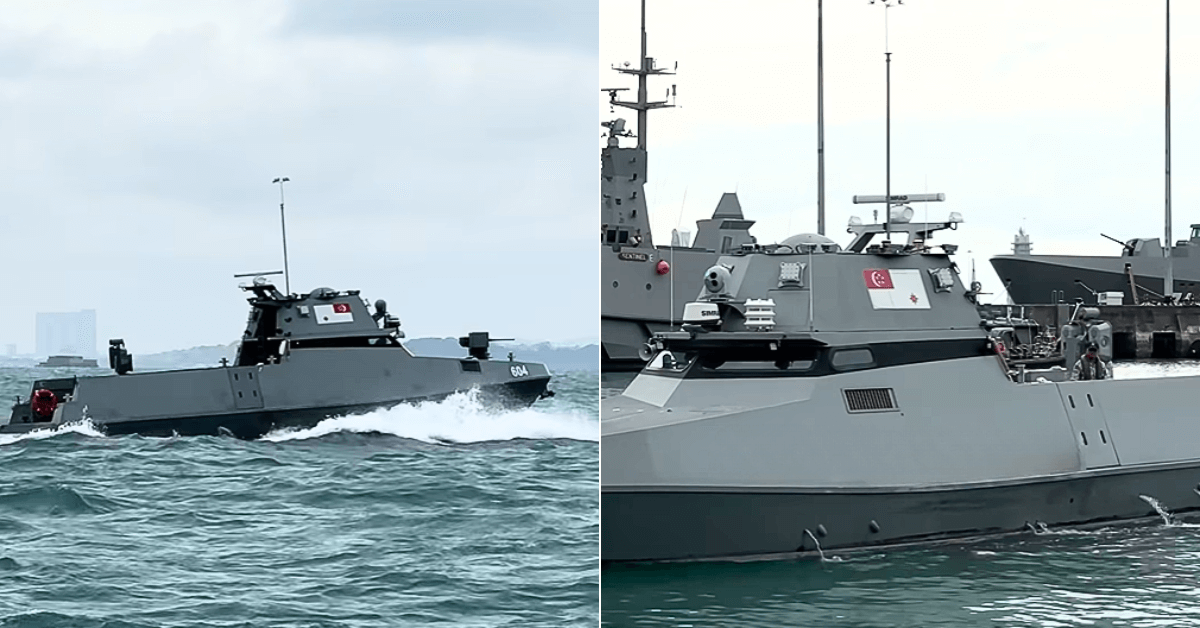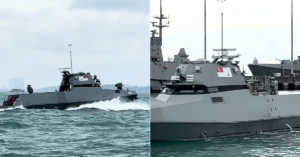
Sudden Water Surge Pushes Barge Into Algiers Lock Gate, Causes $2M Damage
February 5, 2025
Captain Faces Charges After Ferry Runs Aground Due To Human Error
February 5, 2025

The Republic of Singapore Navy (RSN) has introduced autonomous, remotely-controlled patrolled boats, to enhance the security of the world’s busiest shipping lanes.
These vessels, known as Maritime Security Unmanned Surface Vessels (Marsec USVs), began operational patrols in January 2025.
The boats will provide continuous surveillance and quick responses to potential threats in Singapore’s waters. Three Marsec USVs have already been deployed, with a fourth expected to join the fleet later this year.
The vessels, each 16.9 meters (about 56 feet) long and weighing 30 tonnes, were designed and built in Singapore using advanced automation and AI technology.
They are powered by two diesel engines and can reach speeds over 25 knots (about 46 km/h), with the ability to operate autonomously for up to 36 hours.
The Marsec USVs are equipped with a range of high-tech features for navigation and threat detection. The vessels are outfitted with sensors, radar, and cameras to provide a 360-degree view of their surroundings, assisting in safe navigation through the busy waters around Singapore.
They also feature advanced collision detection and avoidance systems, ensuring that they can navigate safely and independently in densely trafficked waters.
The USVs are capable of patrolling, monitoring, and interdicting suspicious vessels. When necessary, the vessels can issue warnings using loudspeakers and long-range acoustic devices.
They are also equipped with a laser system to disorient suspects and a remotely operated machine gun for more serious threats. However, the machine gun is controlled by a human operator ashore, and it is not autonomous.
Video Credits: Singapore Navy/Facebook
Along with the surveillance capabilities, the vessels could eventually be used for other roles, including mine detection or deploying countermeasures.
These vessels are designed to be operated by a two-person crew from a shoreside control station, which reduces the manpower required compared to manned vessels.
A live demonstration of the Maersec USVs took place on February 4, 2025, at Changi Naval Base, where the media was shown how the vessels perform their tasks.
During the demonstration, the vessels intercepted a suspicious vessel, issuing voice commands to stop, simulating a real-life scenario in which the USVs took action without a crew onboard.
The vessels’ autonomous systems, developed in collaboration with the Defense Science and Technology Agency (DSTA) and the Defence Science Organisation National Laboratories (DSO), went through more than 1,000 hours of testing before being deployed.
The systems integrate perception and navigation sensors, as well as the Collision Detection and Collision Avoidance (CDCA) algorithm, to ensure safe and efficient operation in the busy Singapore Strait.
Colonel Thung Yee Meng, commander of the RSN’s 6th Flotilla, talked about the vessel’s high level of autonomy, stating that during the trials, operators never had to intervene, even when the vessels operated autonomously for extended periods.
The vessels will support manned vessels such as the RSN’s Littoral Mission Vessels (LMVs) by providing persistent coverage in the Singapore Strait. This allows other ships to focus on more complex missions, knowing that the USVs are handling the routine patrol and monitoring tasks.
According to reports, the vessels will continue to be tested and refined as the Navy explores more roles for the Marsec USVs, including possibly integrating them with future combat vessels, like the upcoming Multi-role Combat Vessels, which could serve as “drone motherships.”
References: Straits Times, Channel News Asia
Source: Maritime Shipping News


